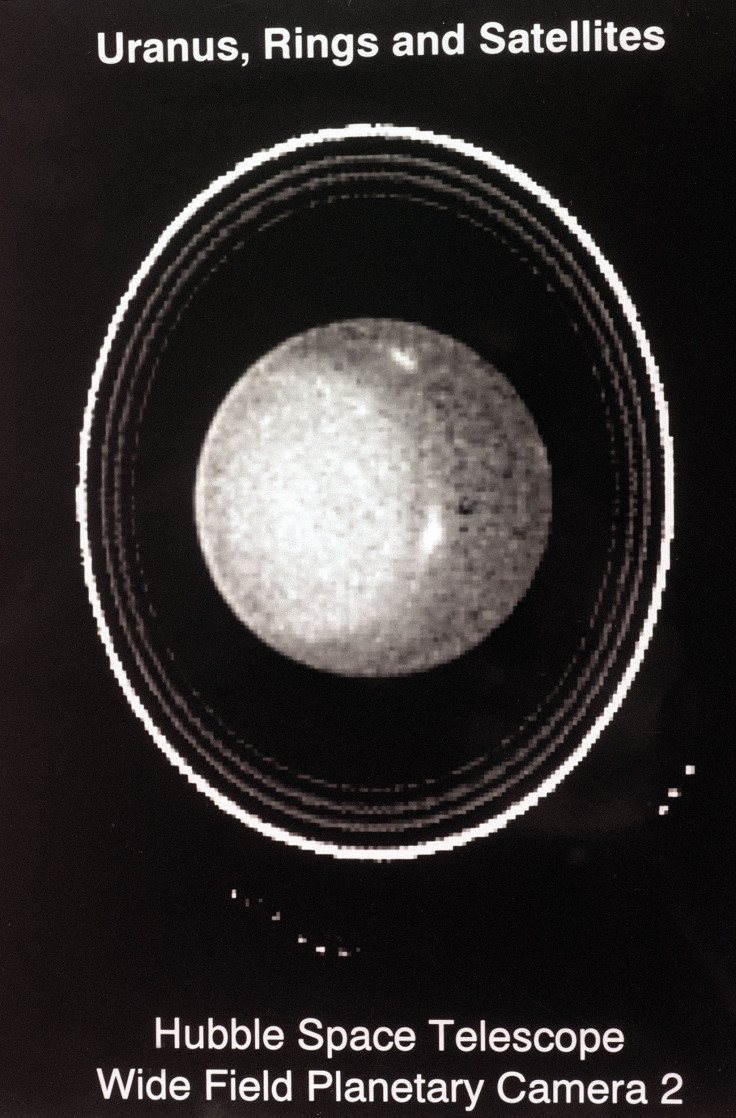NASA's Hubble Captures Stunning Images Of Storms In Neptune, Uranus

NASA has released stunning new images from the Hubble Space Telescope of Neptune and Uranus showing the storms brewing on the icy planets.
On its official Twitter page, NASA posted new photos, taken by Hubble during its routine annual monitoring of the weather in the outer planets of the solar system, showing the two blue, icy planets experiencing storms at their northern hemispheres.
In the Hubble image of Neptune, the dark spot at the top center indicates a dark storm during the planet's southern summer. Meanwhile, the image of Uranus also shows a dominant feature, but this time it's a large white spot at the top, which NASA said is a "long-lived, stormy cloud cap" covering the planet's north pole.
.@NASAHubble, what's the weather in the outer solar system? 🌧 💨
— NASA (@NASA) February 8, 2019
A dark storm with bright clouds is brewing on Neptune during the planet's southern summer, while a long-lived, stormy cloud cap covers the north pole of Uranus. Get the latest report: https://t.co/oF15c8zVXR pic.twitter.com/mhKyUYQEDP
According to NASA's website, the storm in the latest photo of Neptune is the fourth mysterious dark vortex captured by the NASA/ESA telescope since 1993. Hubble took the image of the latest storm, estimated to be 6,800 miles (10,943 kilometers) wide, in Neptune's northern hemisphere in September 2018.
In the image, bright white "companion clouds" can be seen on the right of the dark feature. Previous snaps of storms on Neptune also showed them being accompanied by similar clouds, which form when the flow of ambient air is disturbed and diverted upward over the storm, resulting to gases freezing into methane ice crystals. Similar clouds have appeared on Earth as pancake-shaped features that pop up when air is pushed over mountains. The long, thin cloud on the left of the dark vortex, however, is not actually part of the storm system and is just a transient feature.
Cloud activity in the northern hemisphere was observed by the Hubble as early as 2016, leading scientists to believe that the dark vortex may have began in the lower levels of Neptune's atmosphere and only became visible when the top of the storm reached higher altitudes.
Previously, the Voyager 2 probe found two other dark storms brewing on the remote planet back in 1989 during a flyby. But as of December 2018, Voyager 2 has left the heliosphere — the protective bubble of particles and magnetic fields created by the Sun — and is now over 11 billion miles (18 billion kilometers) from Earth, so scientists can only rely on the Hubble to track these dark spots that appear and fade quickly.
The dark vortex pops up every four to six years at different latitudes and vanishes after around two years, according to a study led by University of California, Berkeley, undergraduate student Andrew Hsu. This is likely related to Neptune's long seasons, which could last decades rather than the months we have on Earth.
Scientists have not yet uncovered how storms form on Neptune. However, its storms are similar to Jupiter's Great Red Spot as it rotates in an anti-cyclonic direction. They also bring up material that could be found deeper in Neptune's atmosphere.
As for Uranus, the stormy cloud cap spanning the planet's north pole in Hubble's new image could be a result of its unique rotation. Uranus is the only planet in the solar system that is tipped over almost onto its side. Due to this, the Sun shines almost directly onto Uranus' north pole and never sets during the summer. The new snap indicates that Uranus is nearly into the middle of the summer season, and the north pole is becoming more prominent.
The image released by NASA also shows a large, compact methane-ice cloud near the fringe of Uranus' polar storm. Encircling the whole planet above the equator is a narrow cloud band. Scientists remain uncertain how these cloud bands are formed and stay confined to its narrow width, especially since Uranus, like Neptune, has wind jets blowing to the west.
© Copyright IBTimes 2025. All rights reserved.





















